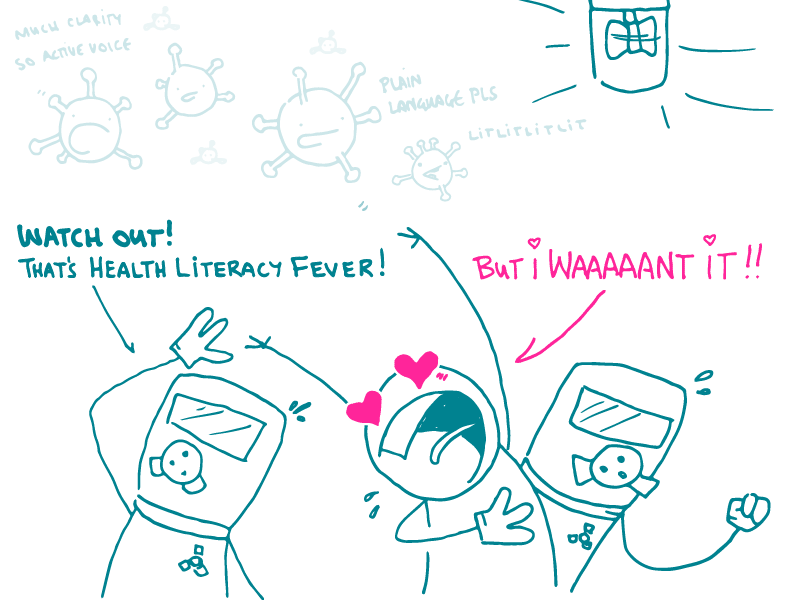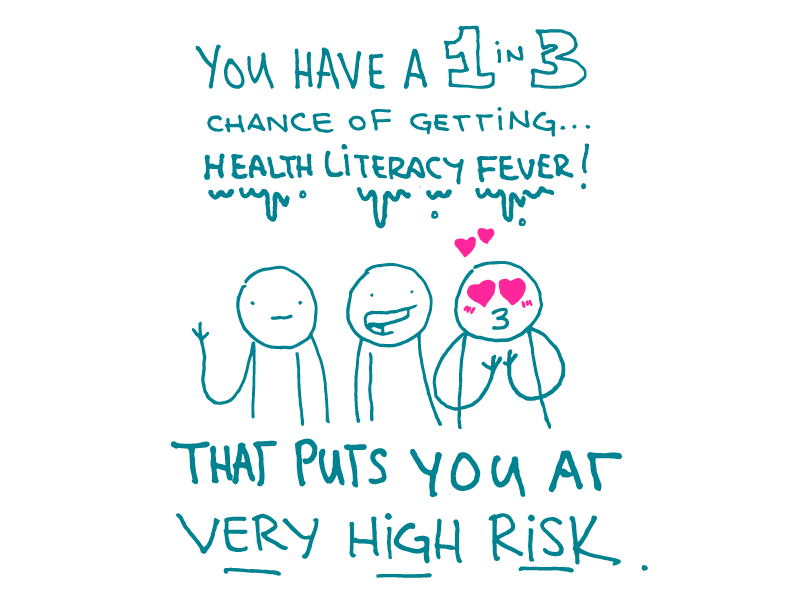
If we told you that your chances of getting health literacy fever are 33%, would you be concerned? What if we said you have a 1 in 3 chance of coming down with the fever? Would that make a difference?
We know that people struggle with numeracy, so talking about numbers in any form can be a challenge for health communicators. Throw probabilities, fractions, and percentages into the mix, and it only gets worse.
People tend to understand frequency expressions (like “1 in 3”) better than percentages, so that’s a good place to start. But even then, people may have a hard time getting meaning from numbers alone.
So along with the numbers, we suggest giving context in plain language. For example, “You have a 1 in 3 chance of getting health literacy fever. That puts you at very high risk.”
And, as is often the case in clear communication, adding a visual can help. For example:

So this, dear readers, is how we work with numbers:
- State numbers as clearly as possible
- Use plain language to give context
- Add visuals to help people understand their meaning
The bottom line: Pay attention to numeracy — use simple numbers, offer context in plain language, and use visuals to drive the meaning home.
Tweet about it: Percentages, numerals, fractions, oh my! Check out these tips for using numbers in #HealthLit materials: https://bit.ly/2WpL9UE
Browse recent posts